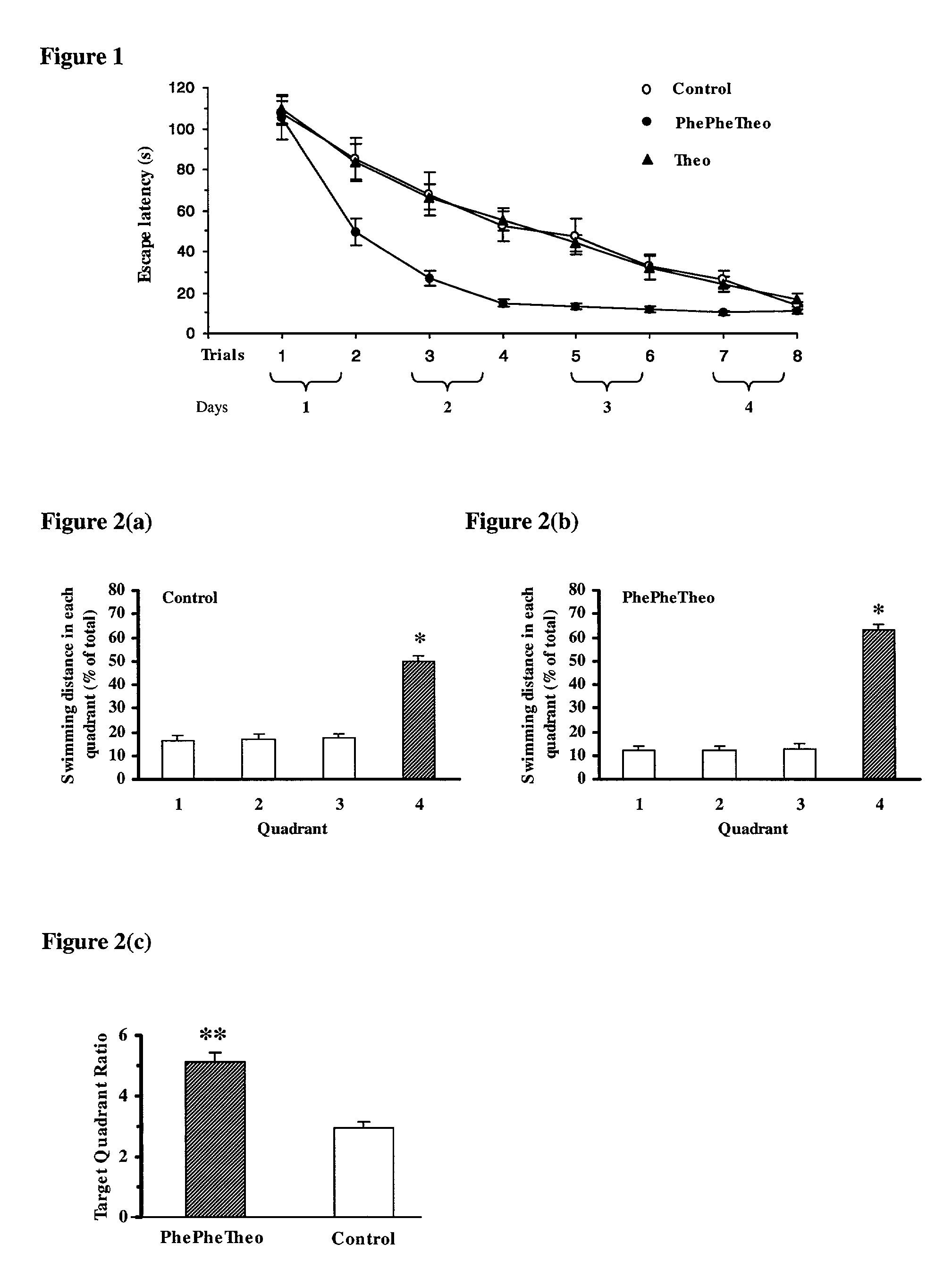Synergistic enhancement of cognitive ability
a cognitive ability and synergistic technology, applied in the field of synergistic enhancement, can solve the problems of ineffective clinical use and other types of cognition disorders, various changes in other neurological functions, side effects,
- Summary
- Abstract
- Description
- Claims
- Application Information
AI Technical Summary
Problems solved by technology
Method used
Image
Examples
Embodiment Construction
[0053] Water-Maze
[0054] The combination of a methylxanthine and a carbonic anhydrase activator was tested by administering phenylalanine (50 mg / kg) plus theophylline to rats 1.5 and 0.5 hours prior to subjecting the rats to the Morris Water Maze paradigm. Measuring the reduction of the escape latency in successive trials assessed cognitive ability, particularly learning. Memory and retention were assessed by measuring the time spent in the appropriate quadrant a day after the last trial. The rats treated with the combination of theophylline and a carbonic anhydrase activator, phenylalanine, exhibited both faster learning curves and enhanced retention compared to rats receiving phenylalanine alone or theophylline alone. (See FIG. 1 graph). Rats treated with the combination of theophylline and phenylalanine exhibited
[0055] FIG. 2(a) and 2(b) illustrate the swimming time, in each quadrant of the Morris Water Maze, for control rats and rats treated with PhePheTheo, respectively. The amo...
PUM
 Login to View More
Login to View More Abstract
Description
Claims
Application Information
 Login to View More
Login to View More - R&D
- Intellectual Property
- Life Sciences
- Materials
- Tech Scout
- Unparalleled Data Quality
- Higher Quality Content
- 60% Fewer Hallucinations
Browse by: Latest US Patents, China's latest patents, Technical Efficacy Thesaurus, Application Domain, Technology Topic, Popular Technical Reports.
© 2025 PatSnap. All rights reserved.Legal|Privacy policy|Modern Slavery Act Transparency Statement|Sitemap|About US| Contact US: help@patsnap.com

